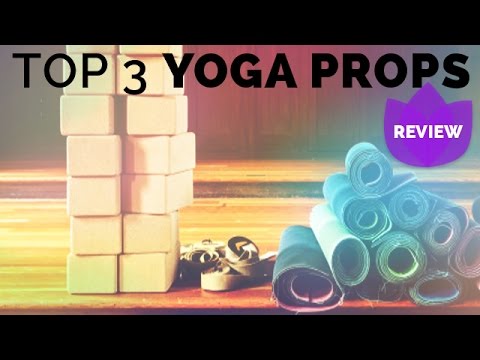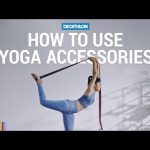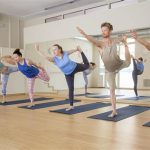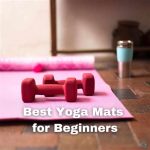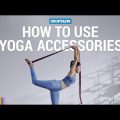Essential Yoga Equipment: A Comprehensive Guide for Beginners and Experts
Yoga has surged in popularity worldwide, offering numerous physical and mental benefits. However, selecting the right equipment can be overwhelming for beginners and even seasoned practitioners. This guide breaks down the most crucial yoga gear, from mats to blocks, and provides insights on how to choose the best options for your specific needs.
Key Concepts: Understanding Yoga Equipment
Yoga equipment, while seemingly straightforward, plays a pivotal role in enhancing your practice. The right gear provides comfort, stability, and assists in safely achieving challenging postures. Here are the main components:
- Yoga Mat: The cornerstone of any practice, providing grip and cushioning.
- Yoga Block: Offers support in poses where flexibility is still developing.
- Yoga Strap: Helps deepen stretches and maintain alignment.
- Yoga Bolster: Adds extra support in restorative postures.
- Yoga Blanket: A versatile tool for comfort, warmth, and support.
- Yoga Wheel: Useful for backbends, core work, and balance training.
Historical Context of Yoga Equipment
Yoga equipment has evolved over centuries. Traditional yogis practiced without any gear, focusing solely on body movements and breath control. However, as yoga spread globally, the need for equipment to enhance accessibility and comfort became evident. The modern yoga mat, invented in the 1960s, revolutionized practice, offering a stable, non-slip surface. Similarly, props like blocks and straps were introduced to allow practitioners of all levels to access advanced postures.
Current State Analysis: Innovations and Trends
The yoga equipment market has seen rapid innovation. Eco-friendly materials, such as natural rubber, cork, and organic cotton, are becoming increasingly popular. Technological advancements have also made an impact, with smart yoga mats now available that offer real-time feedback on your poses. Additionally, brands are focusing on lightweight, portable equipment to cater to the modern, on-the-go yogi.
Practical Applications: Choosing the Right Gear for Your Practice
Different styles of yoga require different types of equipment. Here’s a breakdown of how to choose the right gear:
| Yoga Style | Recommended Equipment | Why? |
|---|---|---|
| Hatha | Mat, Block, Strap | Focuses on slow, deliberate movements. Blocks and straps help maintain alignment. |
| Vinyasa | Mat, Towel | Faster-paced. A good grip on the mat is essential, and a towel helps with sweat. |
| Yin | Mat, Bolster, Blanket | Slow, passive stretches. Props add support and enhance relaxation. |
| Ashtanga | Mat, Towel | Intense and dynamic. Sweat absorption and grip are key. |
| Restorative | Mat, Bolster, Blanket, Blocks | Focuses on deep relaxation. Supportive props are essential for comfort. |
Case Studies: Real-world Examples of Yoga Equipment in Use
Case Study 1: Sarah, a beginner in yoga, struggled with tight hamstrings. A yoga strap allowed her to ease into forward bends without compromising alignment. After a few months, her flexibility improved significantly.
Case Study 2: Tom, an experienced Vinyasa practitioner, switched to an eco-friendly cork mat. Not only did he notice better grip during his practice, but he also felt good about reducing his environmental footprint.
Stakeholder Analysis: Who Benefits from Yoga Equipment?
- Practitioners: Beginners and experts alike benefit from the enhanced stability, support, and comfort that proper yoga gear provides.
- Yoga Studios: By offering high-quality equipment, studios can improve client satisfaction and safety.
- Manufacturers: Companies producing eco-friendly and innovative products are well-positioned to capitalize on the growing wellness trend.
- Environment: With the rise of sustainable materials, the environmental impact of yoga equipment is being reduced.
Implementation Guidelines: How to Incorporate Yoga Equipment in Your Practice
Follow these steps to integrate yoga equipment effectively:
- Assess Your Needs: Based on your practice level and style, determine which equipment is most suitable.
- Invest in Quality: A durable mat or block can last for years. Prioritize eco-friendly options for both quality and environmental impact.
- Learn How to Use the Gear: Take time to familiarize yourself with the correct usage of props. Many online tutorials are available.
- Maintain Your Equipment: Regularly clean your mat and other items to ensure hygiene and longevity.
Ethical Considerations in Yoga Equipment
The rise in the popularity of yoga has led to increased consumption of related products. Ethical questions surrounding the production and disposal of yoga mats and props have surfaced. Practitioners should be mindful of the materials used in their equipment, opting for products made from sustainable, non-toxic materials. Brands that offer transparency in their manufacturing processes are more likely to produce ethically responsible products.
Limitations and Future Research
While yoga equipment has improved accessibility for practitioners of all levels, it has also introduced a level of consumerism that traditional yoga philosophy discourages. Further research is needed into developing fully biodegradable materials and reducing the carbon footprint of yoga gear production. Additionally, studies on the long-term impact of specific props on alignment and injury prevention could help refine their use.
Expert Commentary on Yoga Equipment
“Yoga equipment, when used mindfully, can transform a practice, making poses more accessible and reducing the risk of injury,” says Emma, a yoga instructor with 15 years of experience. “However, it’s important not to become overly reliant on props, as they are meant to support, not replace, the body’s capabilities.”
“The future of yoga equipment is exciting,” adds John, an eco-entrepreneur in the wellness space. “We’re seeing a push toward sustainable materials and smarter designs that align with the principles of yoga.”
